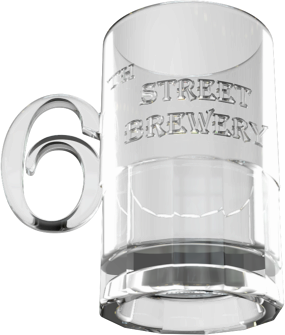ajdelange wrote:This is a joke, right? A joke is fine but some less experienced readers might take it seriously.
No joke. I'm confused why you defaulted to that conclusion.
Take the situation where a brewer has a conical with short legs and needs to pump uphill to bottle on a bench. While it is not an a fortiori conclusion that a bottling operation negates the availability of CO2 it is true that an awful lot of bottlers don't have CO2 so they need to get the beer to flow up hill. Absent a peristaltic pump, the easiest way to do that is air pressure.
So no it's not a joke. In fact, it'll be part of my brewery when finished. I intend to use a foot pump to drive beer up to my bottling station.
For their benefit: The main reason for counterpressure filling of kegs or bottles is exclusion of air - in particular the oxygen in it.
I think that would be your main reason.
It may not even be a valid one. Think on it. Unless you are causing a stir with a jet of air, the CO2 over the beer will remain there and any O2 will be at the top of the tank.
I don't know how much of a jet it'd take to disturb the CO2 layer, but it is not an insubstantial amount of CO2 over the beer, and probably a foot pump wouldn't produce sufficient turbulence to disturb it sufficiently to displace it no matter how one tried. Besides the inlet opening doesn't need to be configured in the form of a restriction nozzle (jet) thus no possibility for a forceful jet of air anyway.
One of the main reasons for buying a CC fermentor is so that you can do CO2 CP transfer to keg (or bottle but usually by way of a keg) and have kegs that are good for 12 months or more.
It wasn't mine.
I got a 15 gallon conical so I could ferment in one vessel and dump yeast without all the muss and fuss of a transfer.
I rather suspect that all the worry over a little O2 getting at the beer at packaging is more hype and nonsense than reality. It might be an issue for those who filter their beer to get the yeast cells out, but not everyone filters. In fact, I anticipate that the yeast that remains in the beer will clean the beer up in the bottle or keg as well as eliminate any O2 that slips in during bottling or handling.
All the things you talked about are all quite valid, but there's a larger universe of brewers than those who fit the model you describe.


